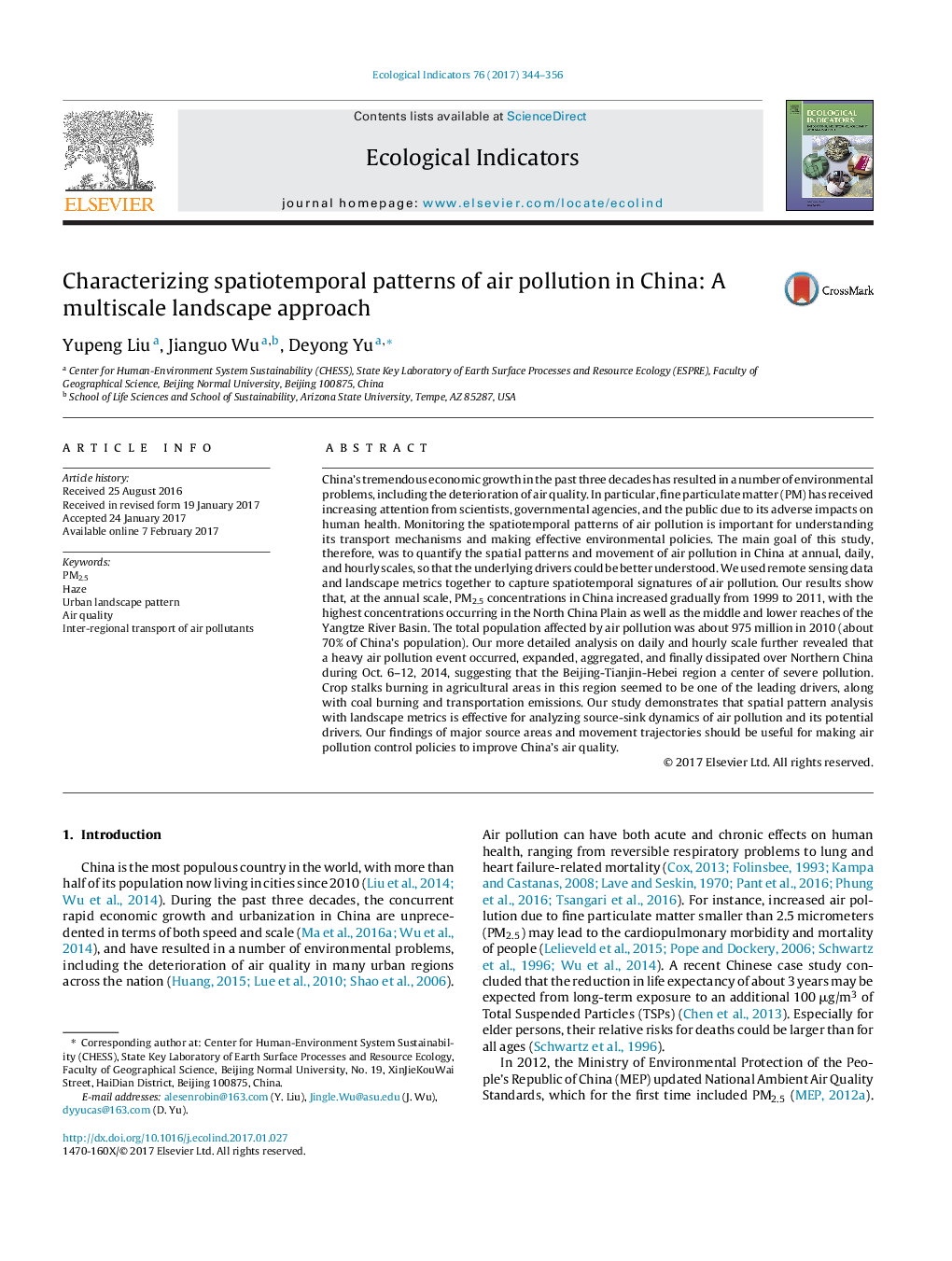| Article ID | Journal | Published Year | Pages | File Type |
|---|---|---|---|---|
| 5741698 | Ecological Indicators | 2017 | 13 Pages |
â¢Landscape metrics were effective in quantifying air pollution patterns.â¢Patch dynamics of air pollution were indicative of source/sink areas.â¢Air pollution in China worsened substantially from 1999 to 2011.â¢About 975 million people in China were affected by air pollution.
China's tremendous economic growth in the past three decades has resulted in a number of environmental problems, including the deterioration of air quality. In particular, fine particulate matter (PM) has received increasing attention from scientists, governmental agencies, and the public due to its adverse impacts on human health. Monitoring the spatiotemporal patterns of air pollution is important for understanding its transport mechanisms and making effective environmental policies. The main goal of this study, therefore, was to quantify the spatial patterns and movement of air pollution in China at annual, daily, and hourly scales, so that the underlying drivers could be better understood. We used remote sensing data and landscape metrics together to capture spatiotemporal signatures of air pollution. Our results show that, at the annual scale, PM2.5 concentrations in China increased gradually from 1999 to 2011, with the highest concentrations occurring in the North China Plain as well as the middle and lower reaches of the Yangtze River Basin. The total population affected by air pollution was about 975 million in 2010 (about 70% of China's population). Our more detailed analysis on daily and hourly scale further revealed that a heavy air pollution event occurred, expanded, aggregated, and finally dissipated over Northern China during Oct. 6-12, 2014, suggesting that the Beijing-Tianjin-Hebei region a center of severe pollution. Crop stalks burning in agricultural areas in this region seemed to be one of the leading drivers, along with coal burning and transportation emissions. Our study demonstrates that spatial pattern analysis with landscape metrics is effective for analyzing source-sink dynamics of air pollution and its potential drivers. Our findings of major source areas and movement trajectories should be useful for making air pollution control policies to improve China's air quality.
